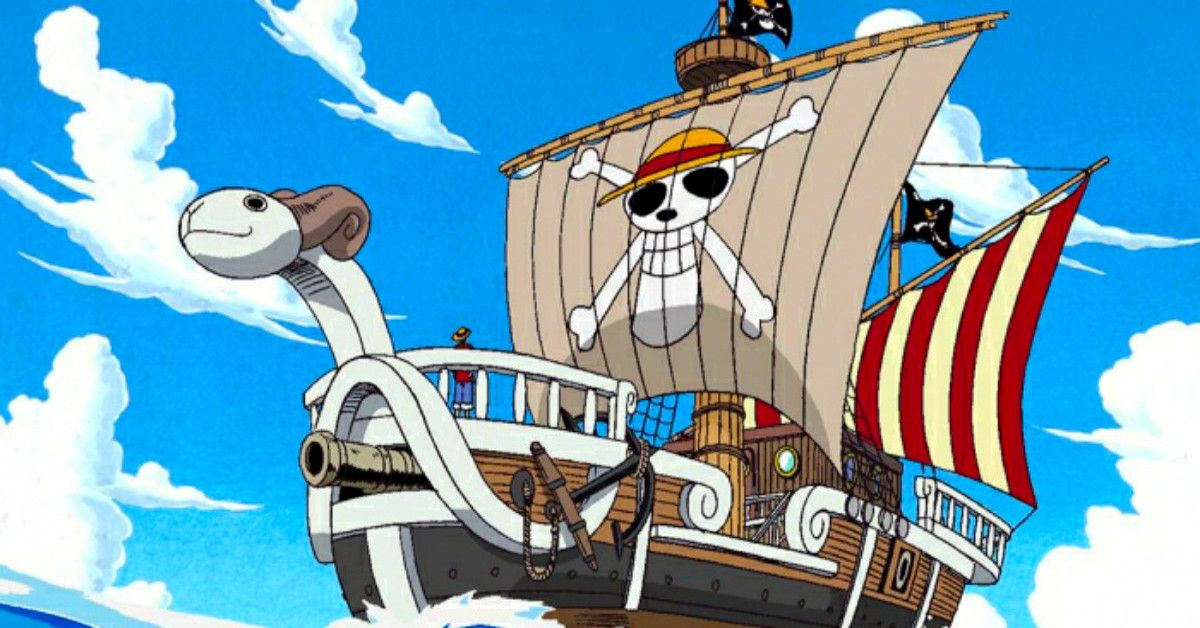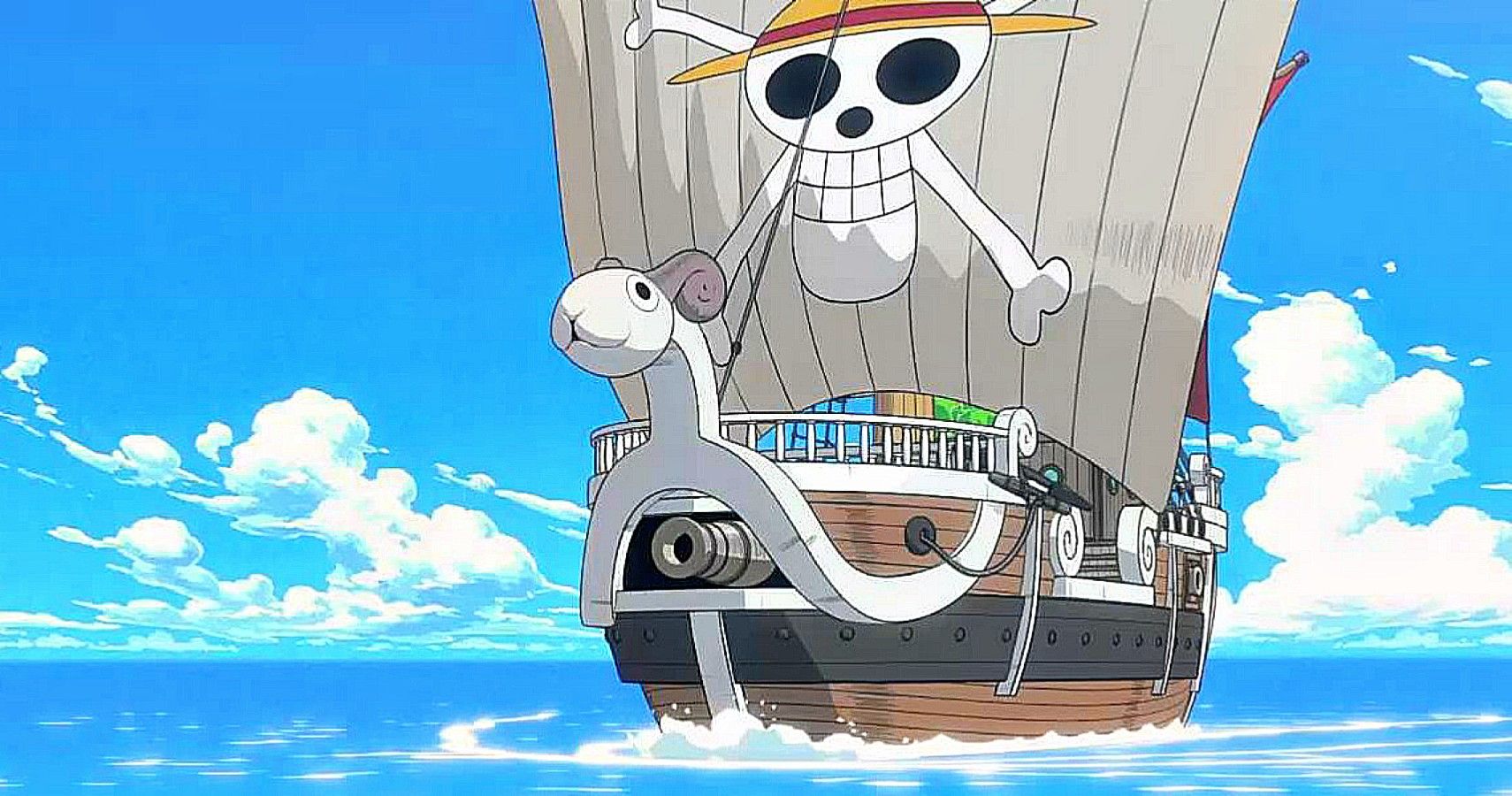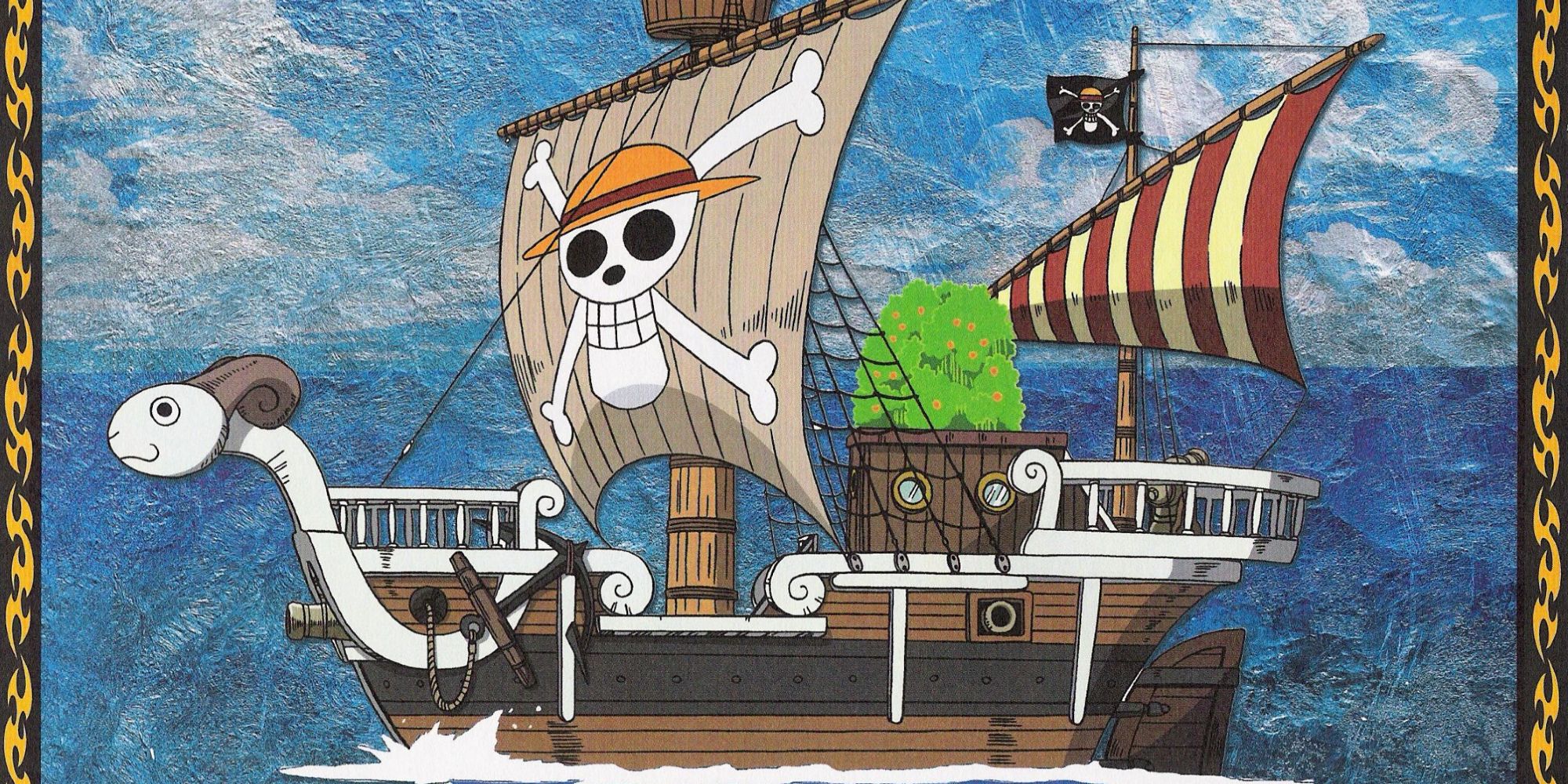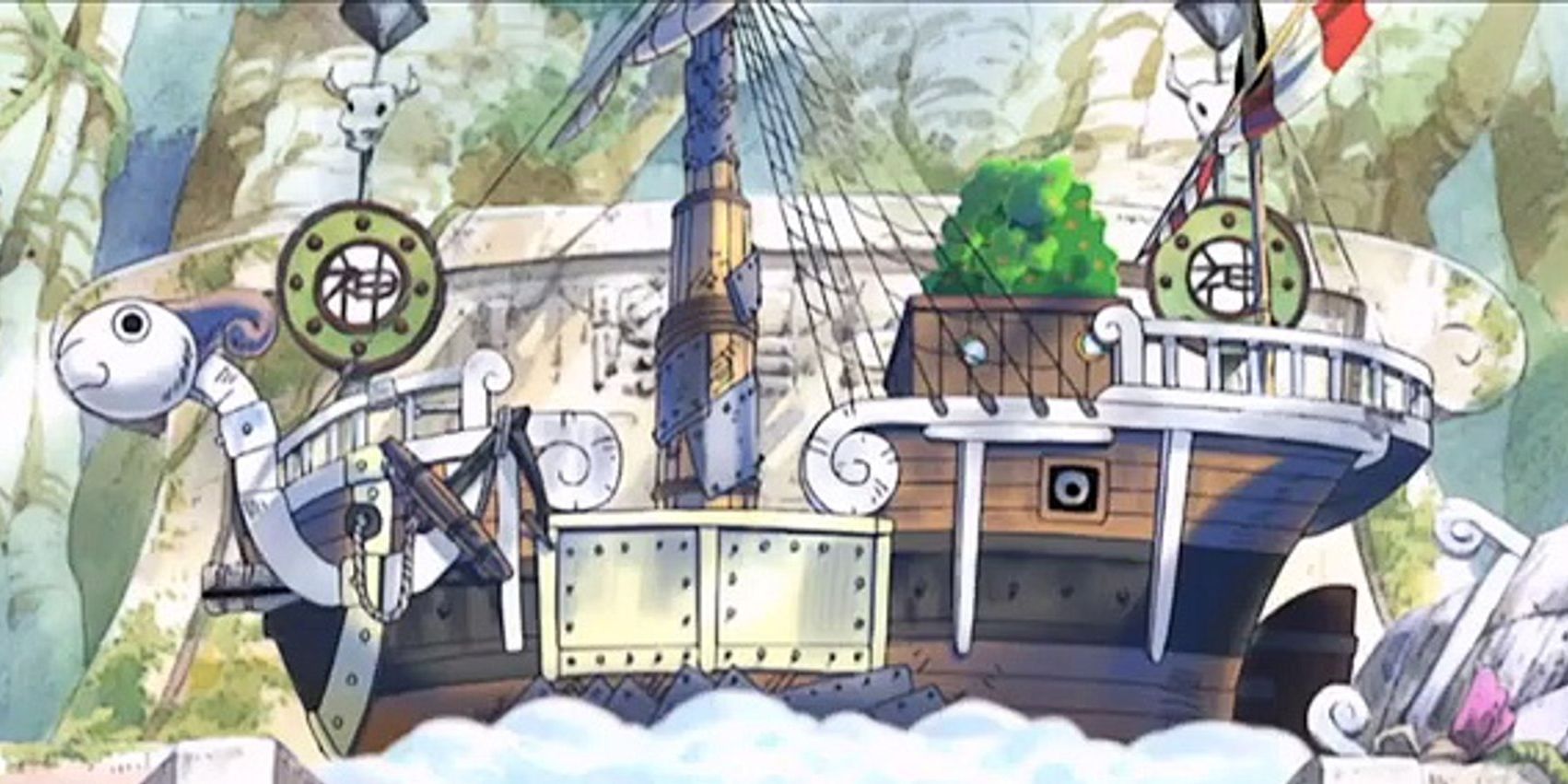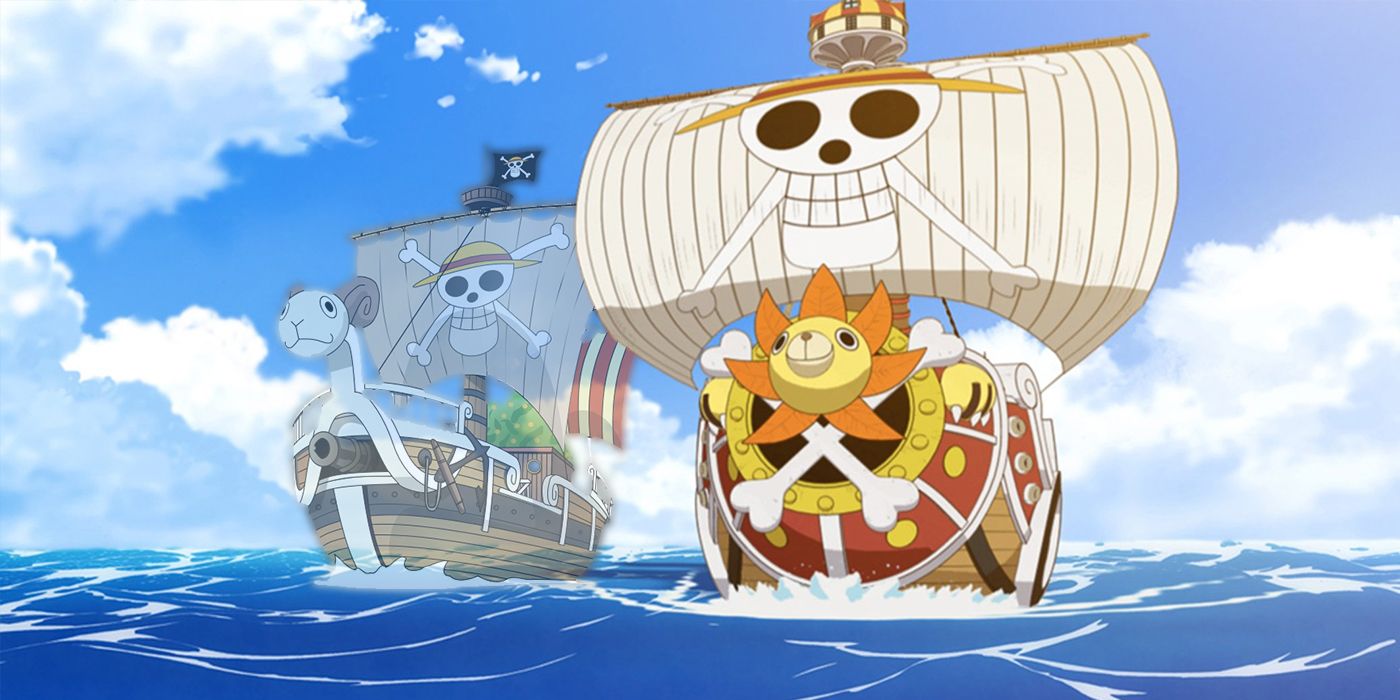In the world of One Piece, personal ships are still the travel method of choice, with no true "mainland" to speak of, being, instead, a planet of islands -- each with its own culture and ecosystem. Perhaps no ship more iconic than the original ship of the Straw Hats, the Going Merry, and perhaps none more unique. Here are five strange facts about the first pirate ship to sail the seas under the Straw Hats' command.
The Going Merry Had His Own Jolly Roger (Before the Staw Hats' One)
In the world of One Piece, with so many pirates sailing the ocean, it's important to be able to identify who's who at a glance. As a result, each ship's individual Jolly Roger (pirate flag) is incredibly important for determining whether a ship in the distance is friend or foe -- and the same is true of the Straw Hats' flag. But before the Going Merry was outfitted with the iconic skull-crossbones-and-hat, it had another flag.
With the ship being designed and named after Lady Kaya's butler Merry, he made sure the Straw Hats didn't leave the harbor without a flag to fly. Being decidedly un-pirate-like, with its bright green background, and stylized version of Merry's face (that more resembled the Going Merry's figurehead than the butler) with the word "GO" underneath, this original flag was unlikely to attract much attention -- not that it got to fly very long.
In both the manga and anime, the flag was replaced merely one chapter/episode after Going Merry's debut, in Chapter #42, and Season 1, Episode 18, "You're the Weird Creature! Gaimon and His Strange Friends!" respectively.
The Going Merry Was Designed After A Real Historical Ship-Class
While not as flashy as a Jolly Roger, the style of the ship that carries it is of just has much importance. The Going Merry is a square-rigged caravel (which has one square sail, in addition to the lateen (triangular) sail,) as opposed to the double lateens sails of the other caravels, which were designed to sail against the wind.
While in real life, these vessels of Portuguese origin were used in the mid-to-late 15th century, for the world of One Piece, it's a hardy and interesting choice for the Age of Piracy. Real-life caravels were primarily used for coast exploration, making use of their small design, shallow keel and lightweight to sail further near shore than other seafaring ships could.
This came into play narratively during the Alabasta Arc, when Mr. 2, Bon Clay made use of Alabasta's Sandora River to protect the ship from larger navy vessels that could not sail in such shallow waters. It's also worth noting that the two-mast sails were used mainly in early caravels, with later models having three or four masts, though it could also be understood why mangaka Eiichiro Oda chose not to draw more.
The Going Merry Has Travelled Over 30,000 Feet... Straight Up!
While the Skypiea arc is notable for the advent of Dials, the introduction of Sky Islands, and the indirect introduction of Haki through what they called Mantra, it's easy for viewers to get caught up in the adventure, and forget that, for however briefly, the Going Merry was technically a flying ship -- an airship, if you will.
The crew ensured that Going Merry looked the part as well, dressing it up with wings, a tail and transformed its Ram figurehead into a chicken figurehead with a red crest and wattles. While its upwards journey along the Knock Up Stream was a little rocky as Nami figured out how to navigate the vertical waterway, the Going Merry not only sailed upwards but also flew with the rising air currents as well.
Sadly, the Going Merry didn't get to keep its airship status for long thanks to the damage it sustained over the course of the adventure but it still flew, and traveled much higher than almost any other pirate ship. That's a feat it and its crew can be proud of.
The Going Merry Sustained Damage That Would Have Doomed Lesser Ships
When it came to reliability, the Going Merry was second to none. No matter what kind of damage the ship sustained, it kept right on sailing under the patchwork repairs of its crew. Whether it was reattaching the figurehead after ramming into the whale Laboon, or repairing the side after it was eaten by Walpol, the Straw Hats patched the going Merry back up with not-always-pretty-but-surprisingly functional metal or wood patches.
Some of the damage was also crew-inflicted, such as when Luffy tore off the mast to start a fight with Laboon, much to the rest of the crew's dismay. While some of these repairs were better than others (given that Franky did not join the crew until after the Going Merry's demise,) it's a testament to the crew's (mainly Ussop's) ingenuity and the ship's hardiness that the Going Merry was able to take on the challenges of the Grand Line without sinking right off the bat.
The Going Merry Was a True Crew Member
While it may seem sentimental to think of the Going Merry as one of the first crew members of the Straw Hats, the fact is that it had a mind of its own. From manifesting its Klabautermann to repair itself during the Skypiea arc, to its stunning whole-crew rescue at Enies Lobby during a Buster Call, the Going Merry loved its crew as much as they loved it.
Despite its fatally broken keel, the Going Merry's desire to continue sailing and adventuring with its crew gave it the ability to speak -- to ask for repairs from Iceberg to sail once more, and then say goodbye, expressing its regret at being unable to carry the Straw Hats farther during its Viking funeral.
While not the most technically impressive ship, the Going Merry helped the Straw Hats through thick and thin, learning and growing with them. While the Going Merry couldn't stay with its crew forever, its adventurous spirit now lives on in the Thousand Sunny.

